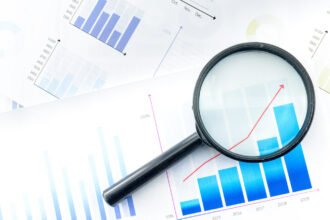
 The term OLAP or Online Analytic Processing was coined in 1993 by relational database technology pioneer Ted Codd (my claim to fame: we went to the same high school, Poole Grammar).
The term OLAP or Online Analytic Processing was coined in 1993 by relational database technology pioneer Ted Codd (my claim to fame: we went to the same high school, Poole Grammar).
The term was chosen to contrast with OLTP or online transaction processing, and was prompted by some clever marketing folks at Essbase, who wanted to promote their multidimensional database product. Codd was famous for his twelve rules defining the relational model and duly came up with twelve rules for analytic systems.
The term was quickly taken up by the rest of the industry, and spawned new definitions (Nigel Pendse’s FASMI test) and multiple variations (MOLAP, HOLAP, ROLAP, Huey, Dewie and Louie, etc.) …

 The term OLAP or Online Analytic Processing was coined in 1993 by relational database technology pioneer Ted Codd (my claim to fame: we went to the same high school, Poole Grammar).
The term OLAP or Online Analytic Processing was coined in 1993 by relational database technology pioneer Ted Codd (my claim to fame: we went to the same high school, Poole Grammar).
The term was chosen to contrast with OLTP or online transaction processing, and was prompted by some clever marketing folks at Essbase, who wanted to promote their multidimensional database product. Codd was famous for his twelve rules defining the relational model and duly came up with twelve rules for analytic systems.
The term was quickly taken up by the rest of the industry, and spawned new definitions (Nigel Pendse’s FASMI test) and multiple variations (MOLAP, HOLAP, ROLAP, Huey, Dewie and Louie, etc.).
Over time, these multiple definitions started muddying the meaning of the term (was it a technology? a user interface? an approach to analysis?), and Gartner decreed that it was ‘just’ part of a larger market called business intelligence. The result has been a long slow decline of the use of the term OLAP, as the Google Trends chart below indicates.

Only Nigel Pendse of the OLAP Report tried to side-step this trend, and continued producing OLAP-specific analysis for many years, but “business intelligence” was clearly the mainstream industry term. A few years ago, Nigel sold the OLAP Report to the German BARC group, who initially continued under the same name, and tried vainly to convince everybody that OLAP was still a “hip term,” but finally succumbed to the inevitable and announced last month that they would be changing the name of the report/site to The BI Verdict.
(Sadly, at some point in this process, BARC decided to lock one of Nigel’s best articles — “How not to buy a BI product” – behind their subscription firewall. All I can find on the web is a far-less-entertaining summary of the main points here.)
Since BARC were the last group using the term with any frequency, it’s now fairly safe to say that OLAP’s days are over, but interestingly, the group seems to have chosen to shift to the wrong term. The chart below shows that the search trend for “business intelligence” has been slowly drifting down over the last five years.

And the decline is even more pronounced for another standard industry term, “performance management”:

Since BI and performance management remain fast-growing markets, this trend is a little surprising – until you look at the search figures for the term analytics. Starting in 2005 (perhaps prompted by the introduction of Google Analytics?), the term has skyrocketed in use.

Possible reasons for this may include:
- Popular books and articles aimed as business people tend to use the term, such as Thomas Davenport’s 1997 book “Competing on Analytics.” This is perhaps because there’s more ambiguity for a business audience, who associate the term “business intelligence” with industry data vendors like Reuters and Thomson (now both part of the same company).
- The acquisition of the mainstream BI vendors by larger organizations (Hyperion by Oracle, Cognos by IBM, and BusinessObjects by SAP) has meant that the industry has been increasingly using other, more generic terms, such as “embedded analytics” and “analytic applications” to explain the same functionality. And the largest remaining independent vendor, SAS, has proclaimed themselves the leader in “business analytics”
My conclusion? By the time you read this, this blog might well be called “Analytic Questions” instead of “BI Questions”…
![]() Was this interesting? Share with others on Twitter with automatic URL shortening!
Was this interesting? Share with others on Twitter with automatic URL shortening!







